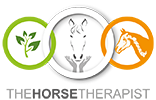Part 1: Do you feed according to the standard?
You often hear that 'companion horses don't need that much food' but 'a sport horse works much harder so it must be fed well'. What exactly is hard work? For a good healthy horse in basic condition, work is not as hard as is often thought. A long outdoor ride takes more than 20 laps through the arena, but the horse is made to make kilometres/miles and it is very good at it.
Ups and downs
Of course there is a difference in intensive training / performance (jumping, eventing, races) where the horse has to do a lot in a short time, or endurance training / performance (such as endurance and dressage) in which the horse has to be able to sustain a little longer. This requires very different performance at the muscle level. The question remains, when is it hard work for a horse?
Energy requirement
To know how much energy your horse needs, it is a simple calculation: food intake - consumption. For horse feed, this is expressed as DE, Digestible energy. You can easily find this on every bag of feed, average figures are known for all types of roughage, or you can find out the specific value of your roughage through roughage analysis. So we can calculate the feed intake with some search.
For consumption, numbers can also be found in the CFB table book animal feed: for example, the basic requirement of a warmblood mare of 600 kg per day is approximately 4.98 DE. But, this is an average number that does not take into account body condition, specific breed and temperament. This maintenance requirement has also been calculated for 'a horse at rest', which apparently means a horse that is kept in the stable for 24 hours.
Nowadays (fortunately) there are very few horses that really stand still for 24 hours, so the basic need is no longer correct. What they get and do in free movement changes a lot, a horse with a lot of space in an active herd will get a lot more exercise per day than a horse standing alone on a small paddock. This makes the calculation for consumption no longer that simple. Incidentally, according to the table booklet, a 29-minute walk, 29-minute trot and 2-minute gallop per day are only counted as 'light work'.
How many horses actually trot for half an hour every day? And how many horses do half of that when they are outside 24/7, besides their training?
Efficiency
In addition, there are many more things to think about: how efficient is the horse moving? This has to do with condition (do the nutrients get where they are needed), muscle (can the horse do the work physically), construction (can the horse move widely and use suspension in the fetlock for example), coordination (does it move easy or does it make mistakes), balance (does the horse still have to do work to keep itself in balance), the surface (does the horse have to react quickly to unexpected obstacles) and the rider (does the horse have to make an effort to move under the rider or is it a smooth whole) and the saddle (does this get in the way of the horse). Let alone what exactly is done during the training: many transitions and side gaits will require more than moving straight forward and riding circles.
In short, there are so many factors that influence the horse's needs. Not only on the energy level, but on all building materials and nutrients in the diet. Numbers are a nice tangible thing to look at with food, but they are actually not good enough if we want to take all factors into account! In the experience of HorseComplete and The Horse Therapist, the need even varies between horses that are related to each other, do the same work and are kept the same: the metabolism of one horse works differently from another, even if they fall into the same 'categories'. Feeding must be an individual thing, really according to need. Our experience is that if the horse gets exactly what he or she needs, it turns out that very different things are often needed than we think and often much less.
Interested? Look further on the site for more information about this, read more in the following parts or contact us. The next part of this trilogy will be out soon and will cover how to meet nutritional needs!
Jente Driessen ( www.horsecomplete.nl ) & Anouk Wiertz ( www.awarance.nl ) & translated by Sharon Bronsveld ( www.thehorsetherapist.ie )
